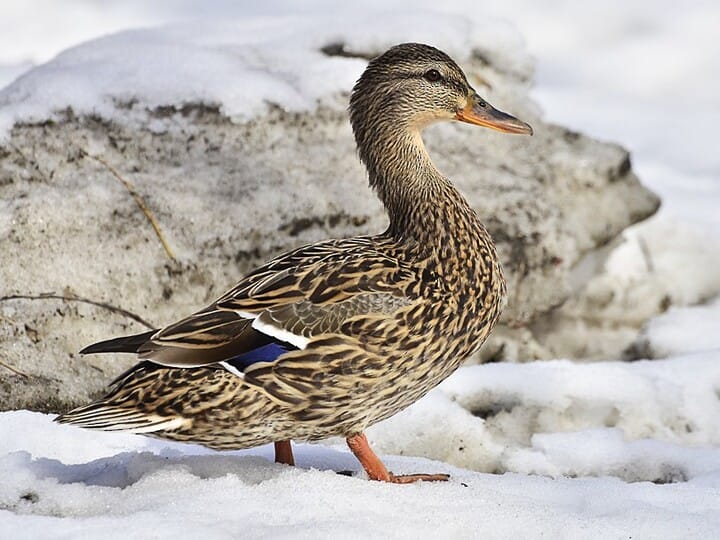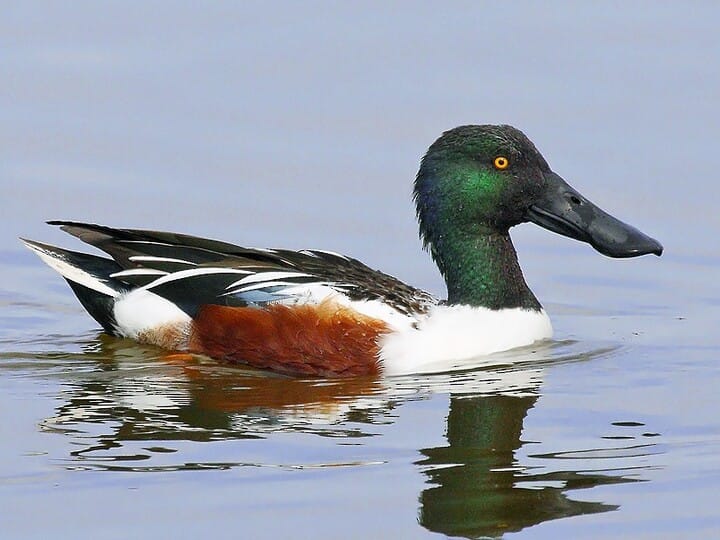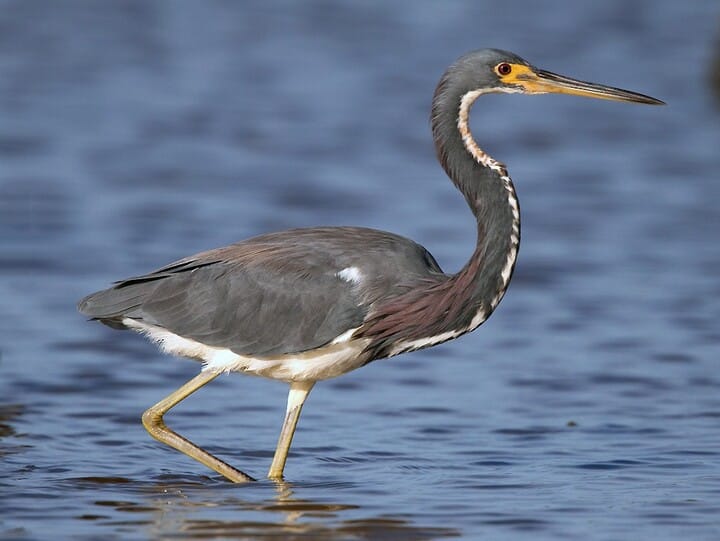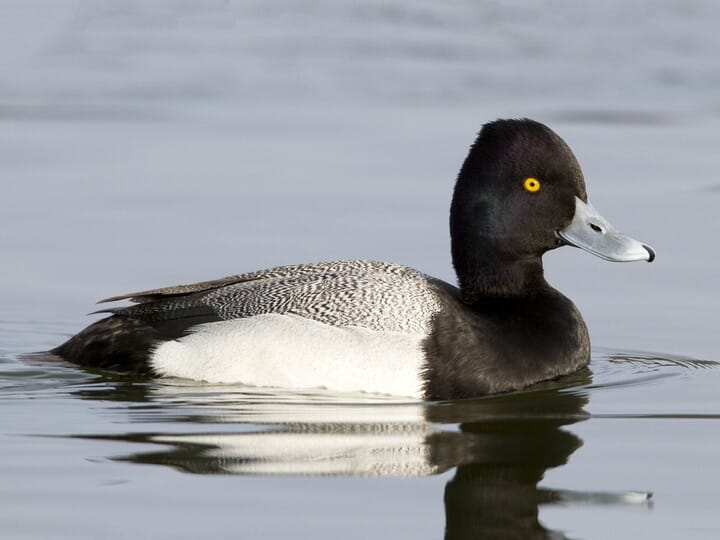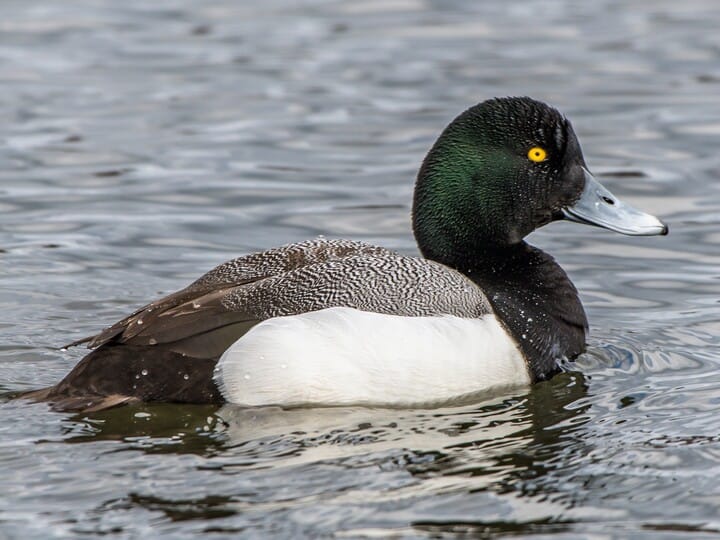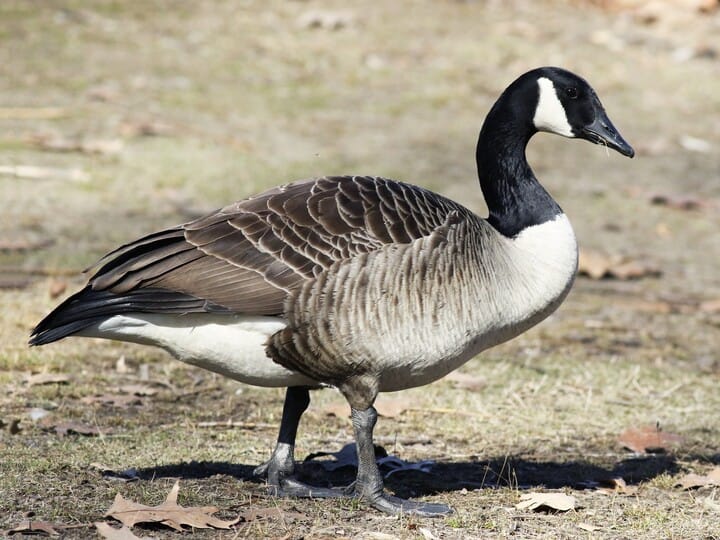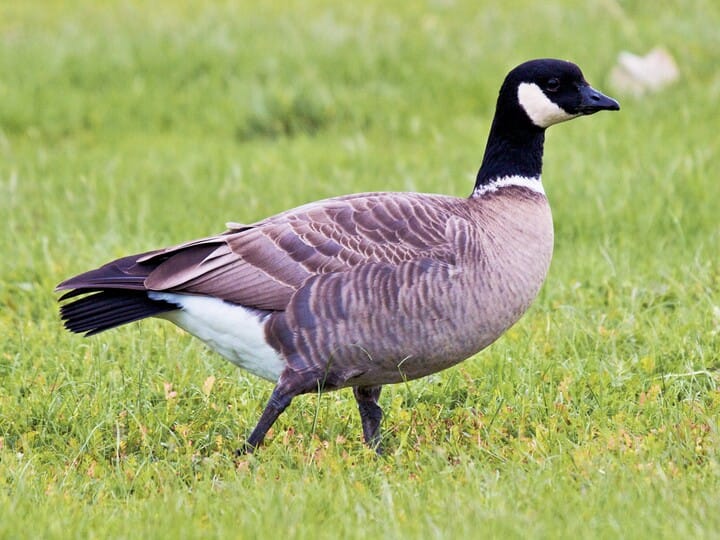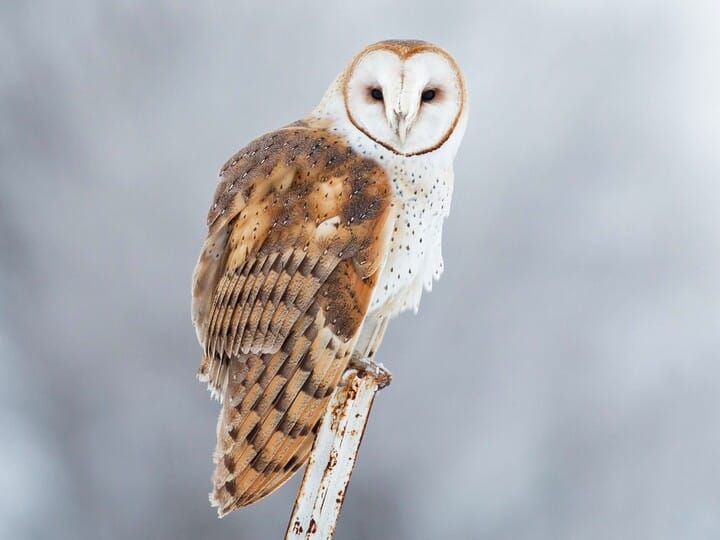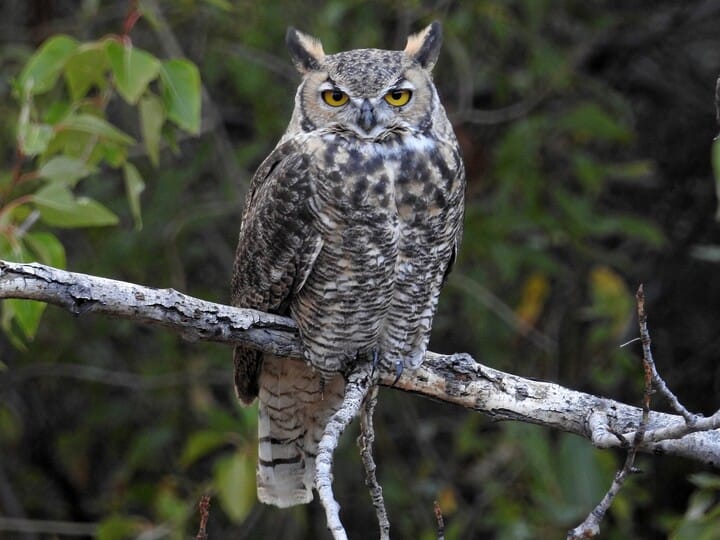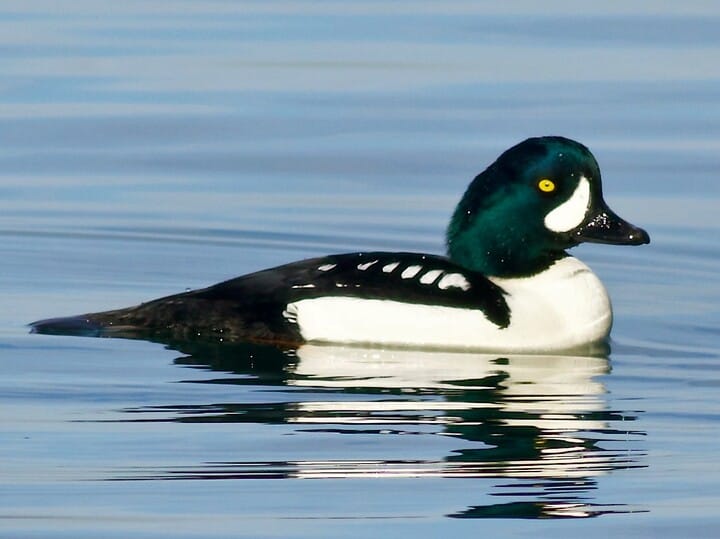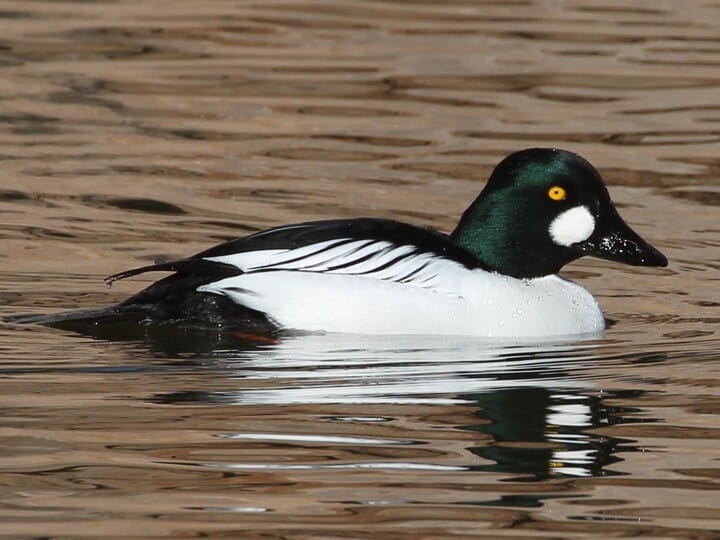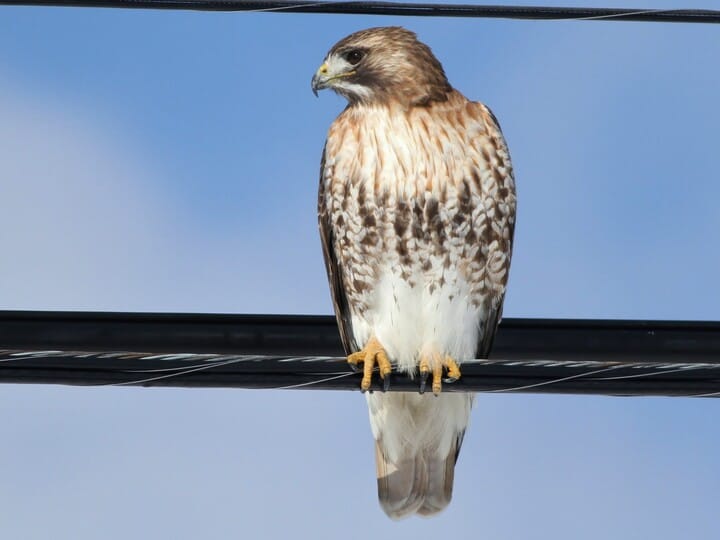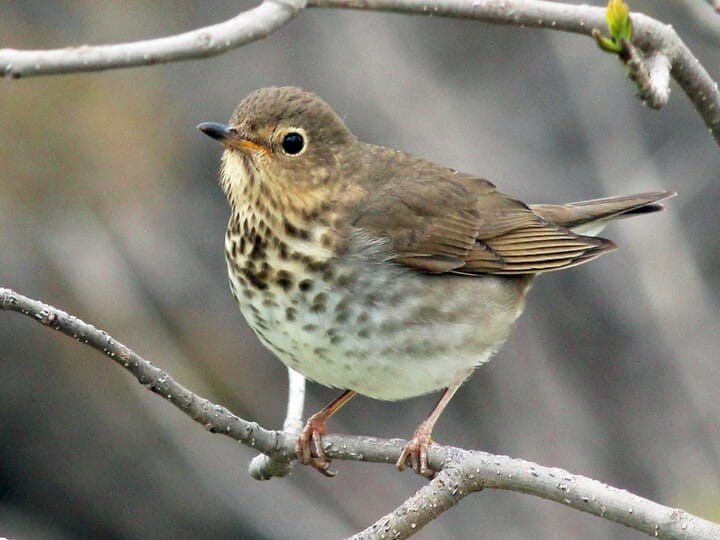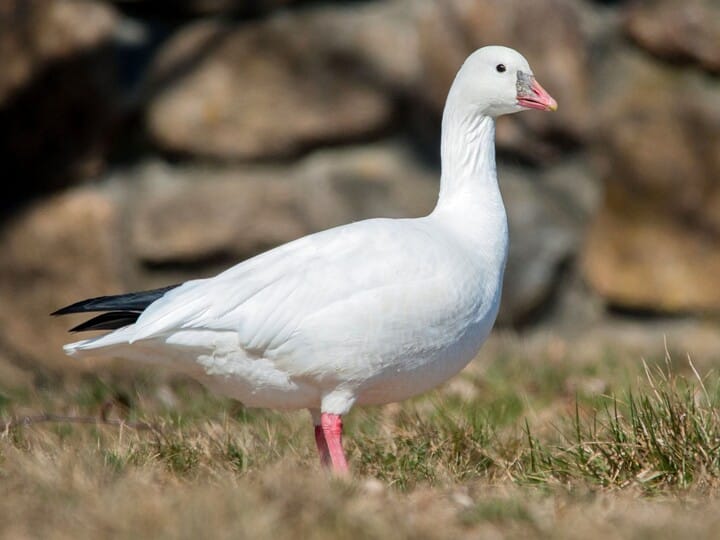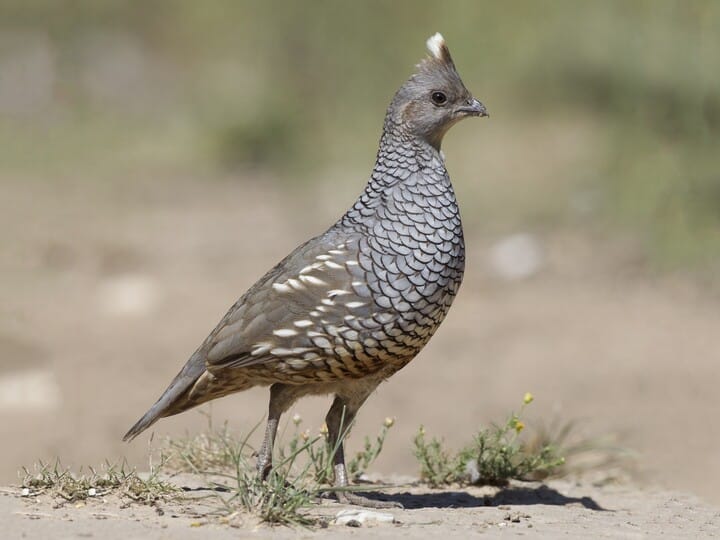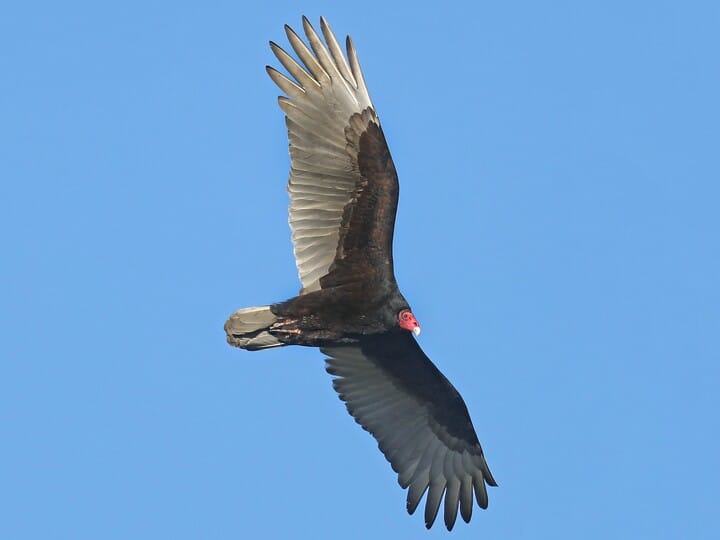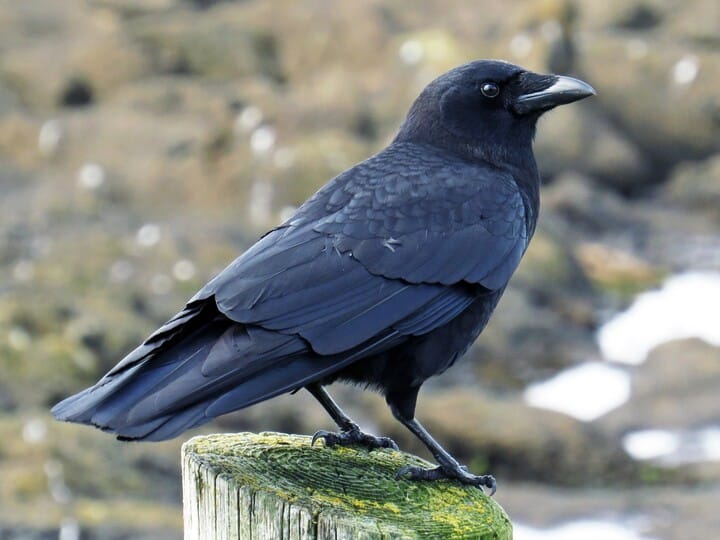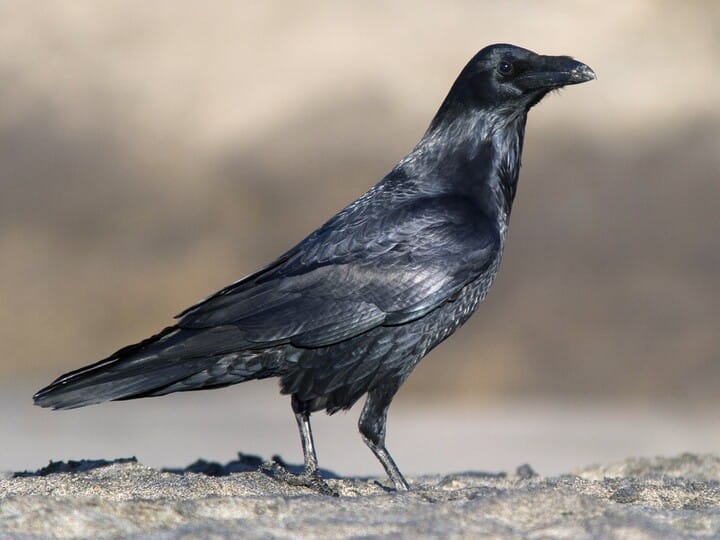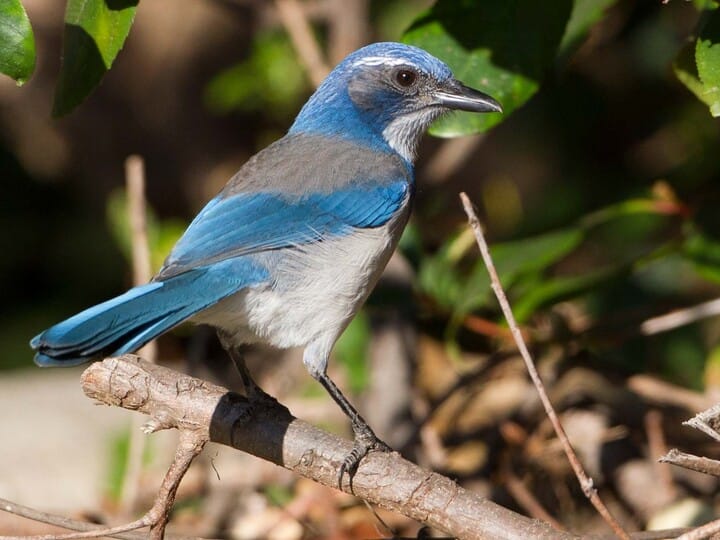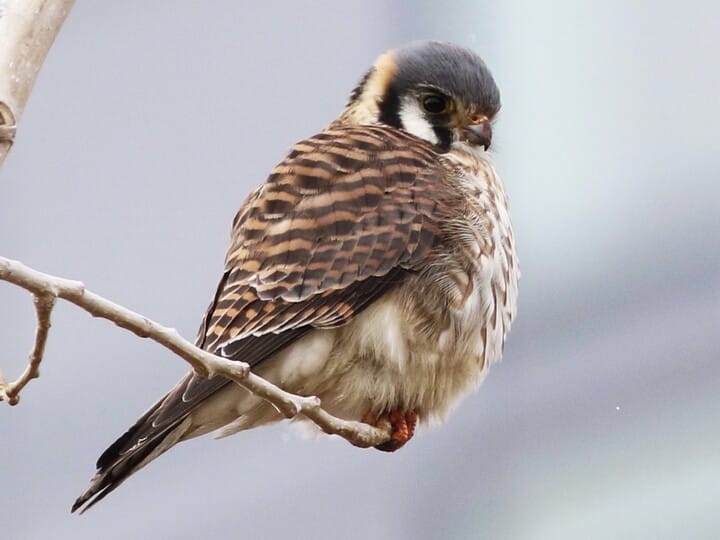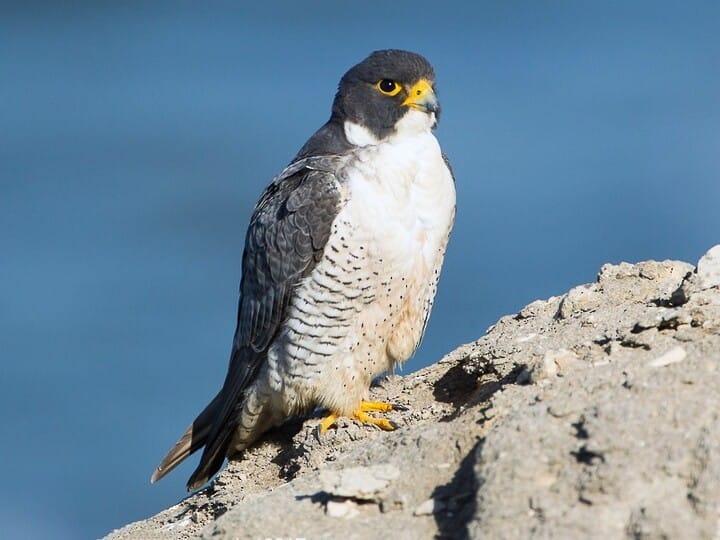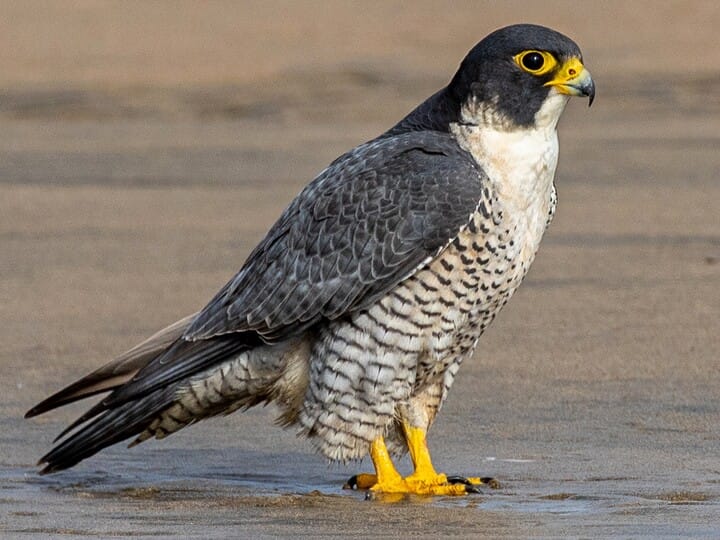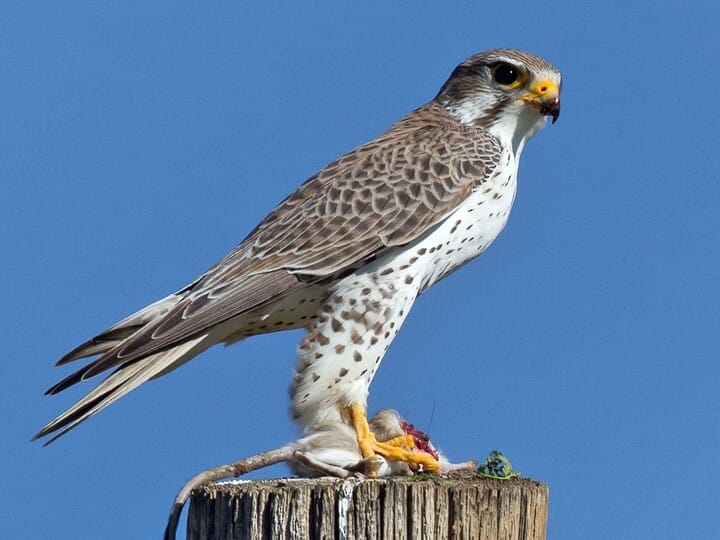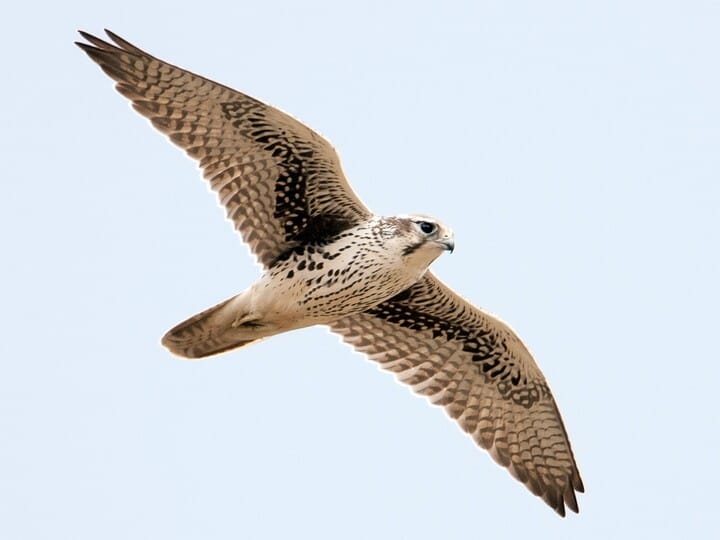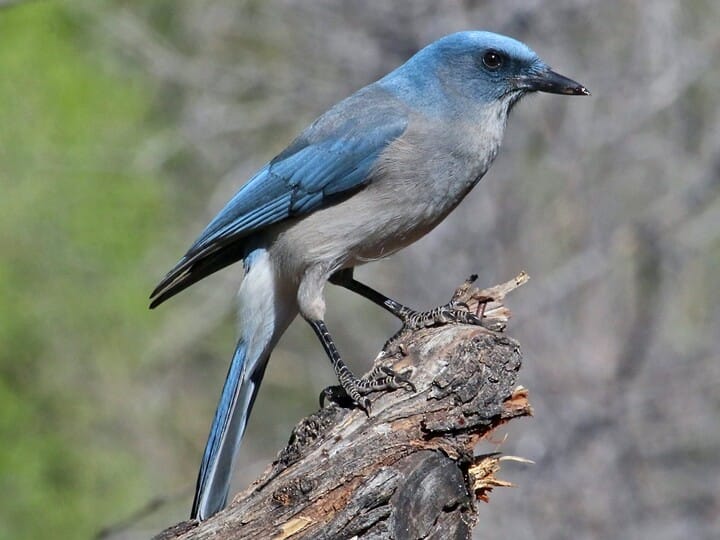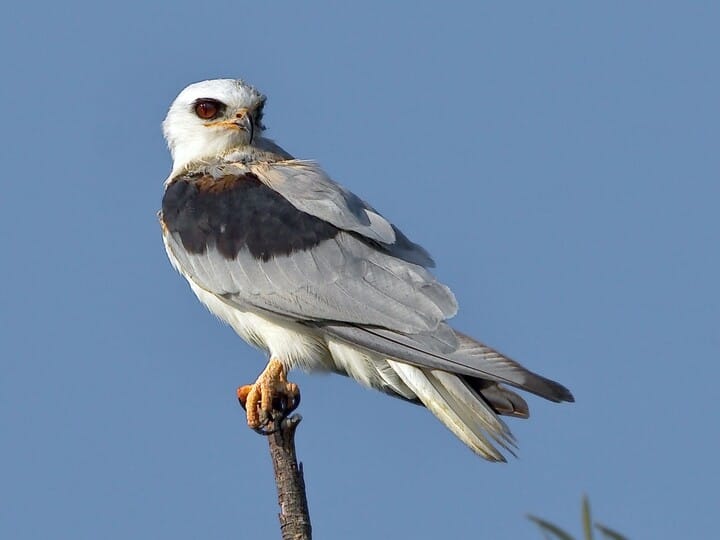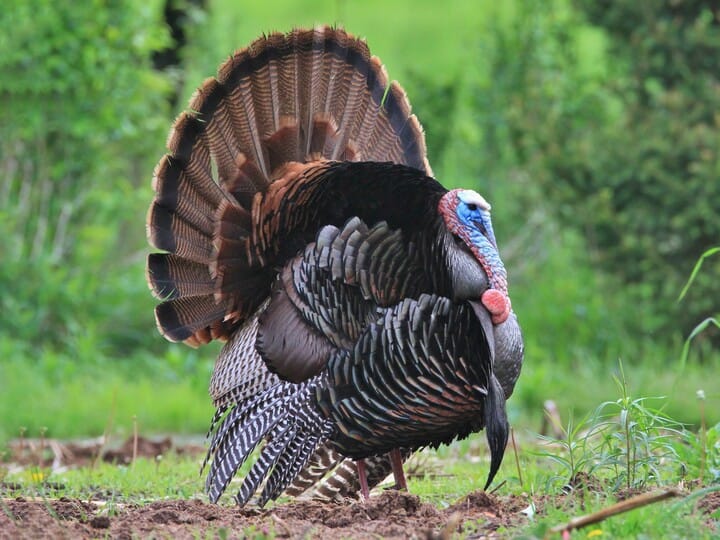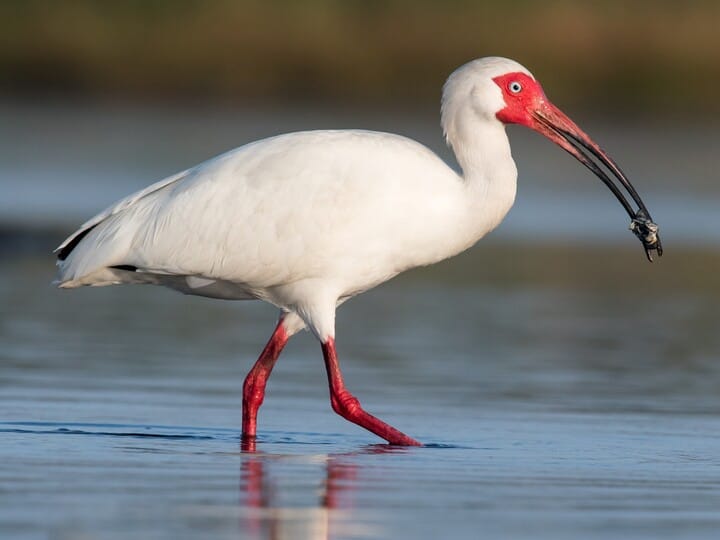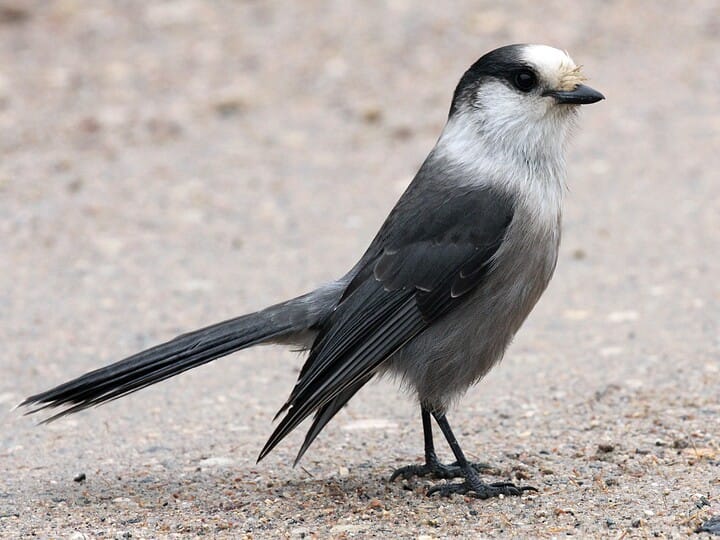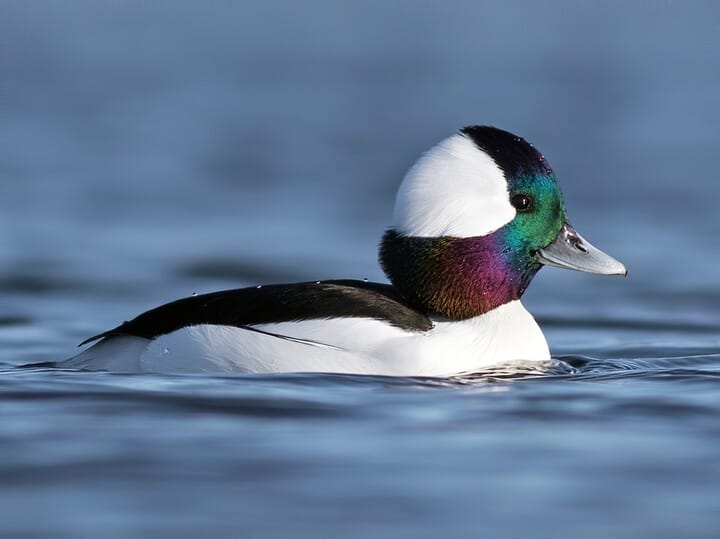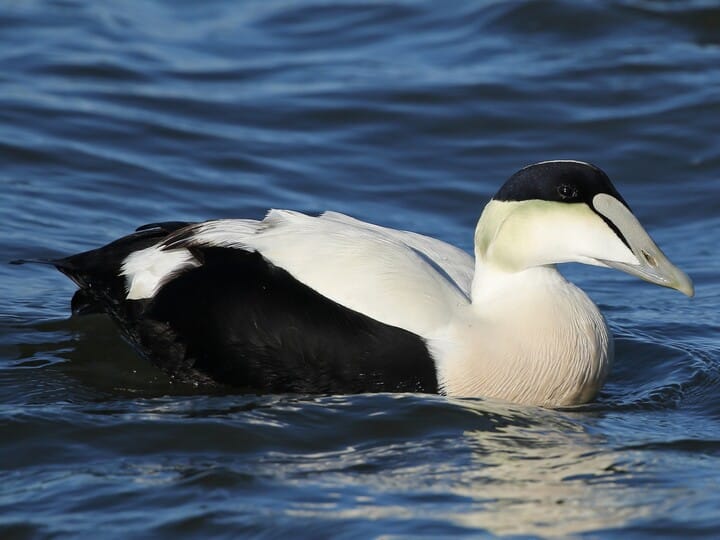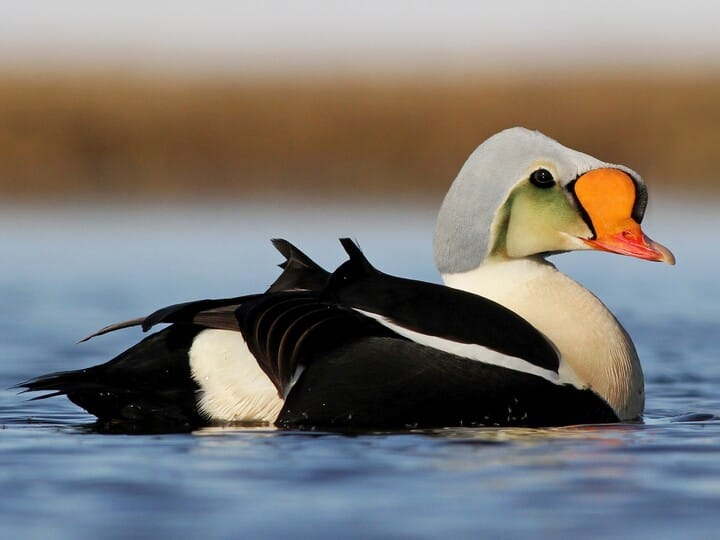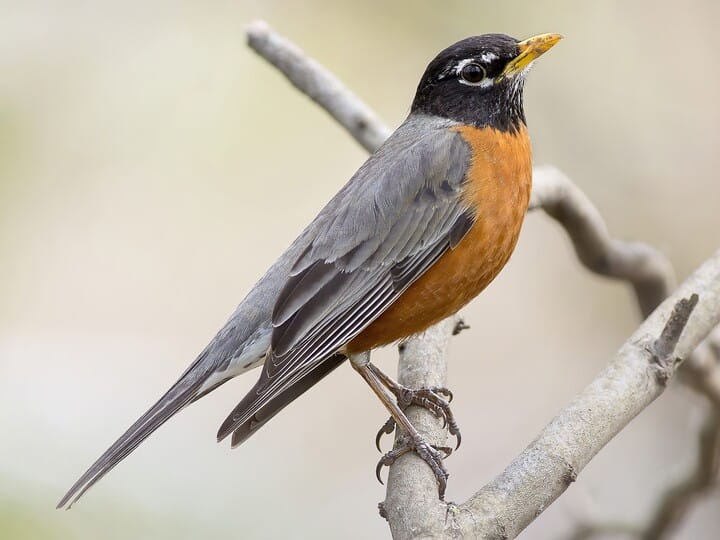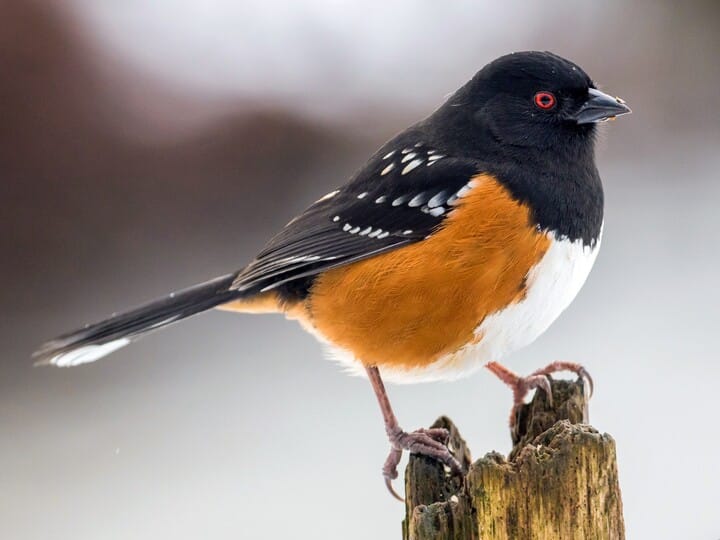# load packages
library(tidyverse)
library(here)
library(janitor)
library(readxl)Table of Birds

Introduction
Birders love birds for their beautiful features, lovely behaviors, and melodious songs. However, there is more to birds than meets the eye. Birds are a diverse group of animals with a wide range of life history traits, habitats, and diets. Some birds are at risk of extinction due to habitat loss, climate change, and other human activities. This table of birds aims to provide a comprehensive overview of bird species around the world, including their life history traits, conservation status, bird call, breeding bird survey data, diet, habitat, range, and similar species.
Read in data
Life history, IUCN, bird call, and breeding bird survey
- Life history data
Life history data was collected from a life history database published in Ecology in 2015 by Myhrvold et al. The data contains about 30 life history traits such as body mass, body length, maturity days, longevity, and clutch sizes for 11,548 species of birds, mammals, and reptiles. The data was downloaded from Wiley archive.
- IUCN Red List data
The IUCN’s Red List, short for the International Union for Conservation of Nature’s Red List, is one of the world’s most comprehensive assessments on global extinction risk status for animal, fungus, and plants. Species are ranked in seven categories: Least Concern, Near Threatened, Vulnerable, Endangered, Critically Endangered, Extinct in the Wild, and Extinct. The Red List helps us understand which species are at risk of extinction and what conservation actions are needed to prevent it. The IUCN data was downloaded from GBIF.
- Bird call
Bird call data was collected from Xeno-canto, a website dedicated to sharing wildlife sounds from all over the world. The data was downloaded from GBIF. The data contains 730,958 occurrences of bird calls from 24,931 species around the world. While I only kept audio data, it also contains latitude and longitude of the observation, and the spectrogram of the sound recording.
To keep the data preparation part short, I migrated all the steps of reading, cleaning, exploring, and joining these data in prep_life_history_IUCN_bbs_birdcall.R. Here we simply read in the intermediate data, ready for use.
birds_life_history_IUCN_bbs_birdcall = read_csv(
here::here(
"data",
"intermediate_data",
"birds_life_history_IUCN_bbs_birdcall.csv"
)
) Take a quick glimpse at the data:
glimpse(birds_life_history_IUCN_bbs_birdcall)Rows: 75
Columns: 16
$ iucn_red_list <chr> "Least Concern", "Least Concern", "Least Co…
$ common_name <chr> "Mute Swan", "Tufted Duck", "Gadwall", "Tun…
$ genus <chr> "Cygnus", "Aythya", "Anas", "Cygnus", "Pavo…
$ species <chr> "olor", "fuligula", "strepera", "columbianu…
$ scientific_name <chr> "Cygnus olor", "Aythya fuligula", "Anas str…
$ birth_or_hatching_weight_g <dbl> 221.50, 34.10, 34.05, 181.25, 120.00, 81.80…
$ adult_body_mass_g <dbl> 10230.00, 701.50, 850.00, 6350.00, 4093.75,…
$ litter_or_clutch_size_n <dbl> 5.950000, 9.600000, 10.000000, 4.000000, 5.…
$ litters_or_clutches_per_y <dbl> 1.00, 1.00, 1.00, 1.00, 1.00, 1.00, 2.00, 1…
$ fledging_age_d <dbl> 135.00, 47.50, 49.50, 60.25, 14.00, 55.00, …
$ male_maturity_d <dbl> 1095.00, 365.00, 240.00, 730.00, 730.25, 36…
$ female_maturity_d <dbl> 1183.569, 365.000, 240.000, 1001.069, 730.0…
$ maximum_longevity_y <dbl> 70.00000, 45.25000, 28.00000, 24.10000, 25.…
$ adult_svl_cm <dbl> 142.50, 43.50, 52.00, 135.00, 95.00, 77.50,…
$ aou <chr> "01782", "01491", "01350", "01800", "03095"…
$ identifier <chr> "https://xeno-canto.org/sounds/uploaded/THH…Note that column aou is the foreign key linking to the USGS breeding bird survey data we will cover below. Column identifier is the URL of bird call media.
USGS breeding bird survey data
USGS Breeding Bird Survey (BBS) project measures bird populations in North America each year. Data of more than 500 species was collected by citizen scientists in U.S., Canada, and Mexico by conducting bird counts along BBS routes throughout the continent.
Data cleaning and transformation steps were also done in prep_life_history_IUCN_bbs_birdcall.R. I summarized annual number of observations for each species to visualize how populations have been changed over time. I also filtered the year of observation to be after 2000 to avoid the situation where species had low number of observations because of incomplete sampling.
annual_num_observation = read_csv(here::here("data", "intermediate_data", "annual_num_observation.csv"))
# This plot shows what the data is about: annual number of observations by species
annual_num_observation |>
filter(aou == "01320") |> # select a species to show: Mallard
ggplot() +
geom_line(aes(x = year,
y = num_observation)) +
theme_bw() +
labs(title = "Annual Number of Observations of Birds in North America",
subtitle = "Example species: Mallard",
x = "Year",
y = "Number of Observations")
I plan to display the trend of annual number of observations in the final table using sparklines, an in cell trend line of a list of values. To do that, I prepared the number of observation data in a list by species.
# convert the annual number of observation to a list by aou to be used in the table
annual_num_observation_ls = annual_num_observation |>
summarize(num_observation_trend = list(num_observation),
.by = aou)
annual_num_observation_ls |> head()# A tibble: 6 × 2
aou num_observation_trend
<chr> <list>
1 01320 <dbl [22]>
2 01330 <dbl [22]>
3 01340 <dbl [22]>
4 01350 <dbl [22]>
5 01360 <dbl [6]>
6 01370 <dbl [22]> Diet
Diet data was download from R package {aviandietdb}. It contains prey data of 759 bird species, along with functions to help summarize data at different taxonomic levels. The complete process of creating the intermediate data of diet is also available in prep_life_history_IUCN_bbs_birdcall.R.
diet = read_csv(here::here("data", "intermediate_data", 'birds_diet_short.csv'))
# add emoji to each category
diet_emoji = diet |>
mutate(
emoji = case_when(
diet == "mammal" ~ "🐀",
diet == "amphibian" ~ "🐸",
diet == "bird" ~ "🐦",
diet == "reptile" ~ "🦎",
diet == "fish" ~ "🐟",
diet == "crustacean" ~ "🦀",
diet == "spider" ~ "🕷",
diet == "insect" ~ "🪲",
diet == "plant" ~ "🌿",
diet == "snail" ~ "🐌",
diet == "cyanobacteria" ~ "🦠",
diet == "worm" ~ "🪱",
diet == "centipede" ~ "🐛",
diet == "millipede" ~ "🐛",
diet == "conifer" ~ "🌲",
diet == "moss" ~ "🌿",
diet == "fern" ~ "🌿",
diet == "scallop" ~ "🐚"
)
)
glimpse(diet_emoji)Rows: 168
Columns: 3
$ common_name <chr> "Pink-footed Goose", "Greater White-fronted Goose", "Garga…
$ diet <chr> "plant", "plant", "plant", "snail", "plant", "cyanobacteri…
$ emoji <chr> "🌿", "🌿", "🌿", "🐌", "🌿", "🦠", "🪲", "🕷", "🌿", "🪲",…Habitat, photos, and similar species
Birds habitat data was collected manually from Animal Biodiversity Web and All About Birds because it was really difficult to find a data source that closely meets my needs. I also manually selected representative and appealing images of the birds and their similar species. Appealing bird photos and external links to similar species are collected from iNaturalist and All About Birds.
# Bird image, similar species and habitat
birds_sheets = excel_sheets(here("data", "birds.xlsx"))
my_birds = lapply(birds_sheets, function(x){
read_excel(here("data", "birds.xlsx"), sheet = x) |>
clean_names()
}) |>
`names<-`(birds_sheets)
# bird_manual table in my_birds contains birds common name, genus, species along with url to birds images, similar species images, and similar species information
glimpse(my_birds$bird_manual)Rows: 75
Columns: 7
$ common_name <chr> "Mute Swan", "Tufted Duck", "Gadwall", "Tundra S…
$ genus <chr> "Cygnus", "Aythya", "Anas", "Cygnus", "Pavo", "C…
$ species <chr> "olor", "fuligula", "strepera", "columbianus", "…
$ image <chr> "https://www.allaboutbirds.org/guide/assets/phot…
$ similar_species <chr> "Tundra Swan", "Greater Scaup", "Green-winged Te…
$ similar_species_image <chr> "https://www.allaboutbirds.org/guide/assets/phot…
$ similar_species_link <chr> "https://www.allaboutbirds.org/guide/Mute_Swan/s…# Habitat data with emoji
habitat_emoji = my_birds$habitat |>
pivot_longer(habitat_1:habitat_8,
values_to = "habitat",
values_drop_na = TRUE) |>
select(-name) |>
select(-genus, -species) |>
# full list of emoji: https://unicode.org/emoji/charts/full-emoji-list.html
# Use emoji habitat data
mutate(emoji = case_when(
habitat == "desert" ~ "🏜",
habitat == "agricultural" ~ "🌾",
habitat == "forest" ~ "🌲",
habitat == "grassland" ~ "🌿",
habitat == "coastal" ~ "🏖",
habitat == "urban" ~ "🏙",
habitat == "suburban" ~ "🏙",
habitat == "lakes and ponds" ~ "🌊",
habitat == "rivers and streams" ~ "🌊",
habitat == "marsh" ~ "🌊",
habitat == "estuarine" ~ "🌊",
habitat == "tundra" ~ "🏔",
habitat == "taiga" ~ "🌲",
habitat == "rainforest" ~ "🌳",
habitat == "mountains" ~ "⛰",
habitat == "brackish water" ~ "🌊",
habitat == "riparian" ~ "🌊",
habitat == "swamp" ~ "🌊",
habitat == "scrub forest" ~ "🌳",
habitat == "chaparral" ~ "🌲"
)) |>
# for better display in gt table, shorten the two phrases
mutate(habitat = case_when(
habitat == "lakes and ponds" ~ "lakes",
habitat == "rivers and streams" ~ "rivers",
TRUE ~ habitat)) |>
filter(habitat != "brackish water")
glimpse(habitat_emoji)Rows: 313
Columns: 3
$ common_name <chr> "Mute Swan", "Mute Swan", "Mute Swan", "Mute Swan", "Tufte…
$ habitat <chr> "lakes", "rivers", "marsh", "coastal", "lakes", "rivers", …
$ emoji <chr> "🌊", "🌊", "🌊", "🏖", "🌊", "🌊", "🌊", "🌊", "🌿", "🏖", …Range data
Range data with 9km resolution was downloaded for birds in table birds_life_history_IUCN_bbs_birdcall from eBird using the R package {ebirdst}. Column species_code is the key to connect range data to the main table. There are 14 species missing range data. The basemap is created using country polygon data from Natural Earth R package {rnaturalearth}.
# eBird Data of Species Range
# download range spacial data from eBird, using the {ebirdst} package
# load the package and set up access key
library(ebirdst)
set_ebirdst_access_key("2gmivfp8e7pb", overwrite = TRUE)Downloading range data takes a long time. I will disable running the download process in the code chunk below and already have them downloaded in data/ebird/.
# eval: false
# find a list of species that are in the ebirdst data base
list_of_species = birds_life_history_IUCN_bbs_birdcall |>
inner_join(ebirdst::ebirdst_runs |>
select(scientific_name),
by = "scientific_name") |>
pull(scientific_name)
for (i in 1:length(list_of_species)) {
ebirdst_download_status(species = list_of_species[i],
# save data to data/ebrid
path = here("data", "ebrid"),
# only download data with smooth_9km resolution
pattern = "smooth_9km",
# skip abundance data for today - it's brilliant data!
download_abundance = FALSE,
# download range data only
download_ranges = TRUE)
}Now, we have the range data downloaded. Let’s read them in and take a look at an example of the range data.
# read in the range data using {sf}
library(sf)
range_data_dir = list.files(here("data", "ebrid", "2022"),
full.names = TRUE) |>
paste0("/ranges") |>
list.files(full.names = TRUE)
range_data = lapply(range_data_dir, function(x){
read_sf(x)
}) |>
# name the range data with species code
`names<-`(list.files(here("data", "ebrid", "2022"),
full.names = FALSE))
# an example of range data
range_data$amecroSimple feature collection with 4 features and 8 fields
Geometry type: MULTIPOLYGON
Dimension: XY
Bounding box: xmin: -157.9416 ymin: 24.87191 xmax: -52.5153 ymax: 64.55559
Geodetic CRS: WGS 84
# A tibble: 4 × 9
species_code scientific_name common_name prediction_year type season
<chr> <chr> <chr> <int> <chr> <chr>
1 amecro Corvus brachyrhynchos American Crow 2022 range breedi…
2 amecro Corvus brachyrhynchos American Crow 2022 range nonbre…
3 amecro Corvus brachyrhynchos American Crow 2022 range postbr…
4 amecro Corvus brachyrhynchos American Crow 2022 range prebre…
# ℹ 3 more variables: start_date <date>, end_date <date>,
# geom <MULTIPOLYGON [°]># append species code to the main table
birds_life_history_IUCN_bbs_birdcall_range = birds_life_history_IUCN_bbs_birdcall |>
left_join(ebirdst::ebirdst_runs |>
select(species_code, scientific_name),
by = "scientific_name")
# download world country polygon data from natural earth in sf format
library(rnaturalearth)
world_country = ne_countries(returnclass = "sf") Functions create table add-ons
To create table add-ons, such as maps, sound players, and linked images for each row (i.e. species) in the table, I created functions that can be used in the table creation process.
Insert range map
library(terra)
# function that inserts range map --------------------------------------------------------------
fcn_range_map = function(species_code){
if(is.na(species_code) | species_code %in% names(range_data) == FALSE){
# because ggplot_image() will be used to render the plot in gt table, we need to also create a ggplot object when range data is not available
ggplot() +
geom_text(aes(x = 0, y = 0),
label = "Range map is not available",
family = "sans",
color = "grey20",
size = 7.5) +
theme_void()
} else {
range = range_data[[species_code]]
world_country_crs = world_country |>
# transform world_country polygon to the same crs as range data
sf::st_transform(crs = terra::crs(range))
ggplot() +
geom_sf(data = world_country_crs,
fill = "grey93",
color = "white") +
geom_sf(data = range ,
fill = "#1B8E29",
color = "#1B8E29",
alpha = 1) +
geom_sf(data = world_country_crs,
color = "grey96",
alpha = 0) +
theme_minimal() +
# narrow down view to only countries following under the species range
coord_sf(xlim = c(st_bbox(range)['xmin'], st_bbox(range)['xmax']),
ylim = c(st_bbox(range)['ymin'], st_bbox(range)['ymax'])) +
theme(legend.position = "none",
panel.background = element_rect(fill = "skyblue4"),
panel.grid.major = element_line(color = "skyblue3",
size = 0.13)
)
}
}
# this is an example of what to expect from the function ------------------------------
fcn_range_map(species_code = names(range_data)[4]) # test the function
Insert sound player for bird call
One trick to embed audio in a shiny app is to use the tags$audio function from the {shiny} package. In fact, shiny::tags$ is a very handy helper to create html tags in R. You can use it to create combinations of html tags to include in gt table. For similar species, I combined species name (tags$p), image (tags$image), and external link (tags$a) to the species page in one cell. You can simply use as.character() |> gt::html() to convert the html tags to a character string that can be rendered as html in gt table.
# function that embeds bird call audio
fcn_sound_player = function(url){
if(is.na(url)){
# message when bird call is not available
return("Audio is not available")
}
if(stringr::str_detect(stringr::str_to_lower(url), ".mp3")){
audio_type = "audio/mp3"
} else if(stringr::str_detect(stringr::str_to_lower(url), ".wav")){
audio_type = "audio/wav"
} else {
return("Audio file type is not supported")
}
require(shiny, quietly = T)
tags$audio(src = url,
type = audio_type,
controls = TRUE) |>
as.character() |>
gt::html()
}# function that embeds text, image with external link
fcn_linked_image_embed = function(url,
go_to_url,
text,
width = "200px"){
require(shiny, quietly = T)
embed_image = tags$image(src = url,
width = width)
add_link = tags$a(href = go_to_url,
embed_image)
tags$p(text,
# add line break
html("<br></br>"),
add_link) |>
as.character() |>
gt::html()
}
# function that embeds image and text
fcn_text_image_embed = function(url,
text,
width = "200px"){
require(shiny, quietly = T)
embed_image = tags$image(src = url,
width = width)
tags$p(text,
# add line break
html("<br></br>"),
embed_image) |>
as.character() |>
gt::html()
}Properly format diet and habitat data
For diet and habitat data, I hope to present them as an item list by bird species where each item starts with a representative emoji. I created a function that can properly format the the two fields using the html trick as well. It will return visuals in each vell like the example below:
🌲 Forest
🏖 Coastal
🐦 Bird
🦎 Reptile
fcn_emoji_list = function(df, label_var) {
df1 = df |>
mutate(label_fmt = str_to_sentence({{label_var}}) |>
# add a comma "," after each item. It will be used to separate out each item in a new line by replacing it with "</p><p>"
paste0(",")) |>
# append emoji to the front
mutate(emoji_with_label = paste0(emoji, " ", label_fmt))
df_out = aggregate(
# aggregate diet or habitat items for each bird species
emoji_with_label ~ common_name,
data = df1,
FUN = paste,
collapse = ""
) |>
rowwise() |>
# mutate(emoji_with_label = str_replace(emoji_with_label, ",$", "")) |>
mutate(
emoji_with_label = str_replace_all(emoji_with_label, ",", "</p><p>"),
emoji_with_label = paste0("<p>", emoji_with_label, "</p>")
)
return(df_out)
}
# apply the function to both habitat and diet data
habitat_emoji_comb = fcn_emoji_list(habitat_emoji, label_var = habitat) |>
rename(habitat_emoji_with_label = emoji_with_label)
diet_emoji_comb = fcn_emoji_list(diet_emoji, label_var = diet) |>
rename(diet_emoji_with_label = emoji_with_label)
head(habitat_emoji_comb)# A tibble: 6 × 2
# Rowwise:
common_name habitat_emoji_with_label
<chr> <chr>
1 Acorn Woodpecker <p>🌲 Forest</p><p>🌳 Rainforest</p><p></p>
2 American Black Duck <p>🌊 Lakes</p><p>🌊 Rivers</p><p>🏖 Coastal</p><p></p>
3 American Crow <p>🌲 Forest</p><p>🌿 Grassland</p><p>🏖 Coastal</p><p>🏙 U…
4 American Kestrel <p>🏜 Desert</p><p>🌿 Grassland</p><p>🌲 Chaparral</p><p>…
5 American Robin <p>🌲 Forest</p><p>🌳 Scrub forest</p><p>🏙 Urban</p><p>🌾…
6 American Wigeon <p>🌊 Lakes</p><p>🌊 Rivers</p><p>🌊 Marsh</p><p>🌊 Estua…Build the table
Now we have everything to build the table of birds using {gt}.
First, let’s combine everything into a `bird_final` data.
library(gt)
library(gtExtras)
birds_final = birds_life_history_IUCN_bbs_birdcall_range |>
arrange(scientific_name) |>
# join in images and urls that were manually collected
left_join(my_birds$bird_manual,
by = c("common_name")) |>
# join in breeding bird survey data
left_join(annual_num_observation_ls,
by = c("aou" = "aou")) |>
# join in diet data
left_join(diet_emoji_comb,
by = "common_name") |>
mutate(diet_emoji_with_label = ifelse(is.na(diet_emoji_with_label),
"<p>Diet data is not available</p>",
diet_emoji_with_label)) |>
# join in habitat data
left_join(habitat_emoji_comb,
by = "common_name") |>
mutate(habitat_emoji_with_label = ifelse(is.na(habitat_emoji_with_label),
"<p>Habitat data is not available</p>",
habitat_emoji_with_label)) |>
# select columns to show at order that looks good to me
select(
iucn_red_list,
image,
common_name,
birth_or_hatching_weight_g:adult_svl_cm,
diet_emoji_with_label,
habitat_emoji_with_label,
num_observation_trend,
species_code,
bird_call = identifier,
similar_species,
similar_species_link,
similar_species_image
) |>
# make iucn_red_list a factor. This will be helpful for coloring
mutate(iucn_red_list = factor(iucn_red_list,
levels = c("Least Concern",
"Near Threatened",
"Vulnerable",
"Endangered",
"Critically Endangered",
"Extinct in the Wild",
"Extinct"))) |>
rowwise() |>
mutate(
# create the display of the species: a combination of common name and image
image = pmap(
.l = list(url = image |> as.list(),
text = common_name |> as.list()),
.f = fcn_text_image_embed,
width = "200px" # set width of the image
),
# create the display of similar species: a combination of common data, image, and external link
similar_species_combined = pmap(
.l = list(
url = similar_species_image |> as.list(),
go_to_url = similar_species_link |> as.list(),
text = similar_species |> as.list()
),
.f = fcn_linked_image_embed,
width = "200px" # set width of the image
),
# create the sound player embed of bird call
bird_call = map(bird_call,
.f = fcn_sound_player)
) |>
# remove columns already included in above displays
select(-c(
common_name,
similar_species,
similar_species_link,
similar_species_image
)) Let’s turn the data into a gt table and format cells with colors, sparklines, themes, etc..
bird_gt = birds_final |>
gt() |>
# color iucn red list column
data_color(
columns = iucn_red_list,
method = "factor",
ordered = TRUE, # use the factor level orders of iucn_red_list
palette = "RdYlGn",
reverse = TRUE # reverse the order of color palette
) |>
# format diet column
text_transform(fn = function(x) map(birds_final$diet_emoji_with_label, gt::html),
locations = cells_body(columns = diet_emoji_with_label)) |>
# format habitat column
text_transform(fn = function(x) map(birds_final$habitat_emoji_with_label, gt::html),
locations = cells_body(columns = habitat_emoji_with_label)) |>
# use sparkline to visualize the trend of survey observation
gt_plt_sparkline(
column = num_observation_trend,
type = "ref_last",
palette = c("#56290C", # sparkline color,
"black", # final value color
"#FB260C", # range color low,
"#1B8E29", # range color high,
"grey"), # 'type' color (eg shading or reference lines)
fig_dim = c(25, 65),
same_limit = FALSE
) |>
# embed range map
text_transform(
locations = cells_body(columns = species_code),
fn = function(x) {
map(birds_final$species_code, fcn_range_map) |>
ggplot_image(height = px(250))
}
) |>
cols_label(iucn_red_list = "IUCN",
image = "Common Name",
birth_or_hatching_weight_g = "Hatching Weight (g)",
adult_body_mass_g = "Adult Body Mass (g)",
litter_or_clutch_size_n = "Clutch Size",
litters_or_clutches_per_y = "Clutches per Year",
fledging_age_d = "Fledging Age (days)",
male_maturity_d = "Male Maturity (days)",
female_maturity_d = "Female Maturity (days)",
maximum_longevity_y = "Maximum Longevity (years)",
adult_svl_cm = "Adult Snout-Vent Length (cm)",
diet_emoji_with_label = "Common Diet",
habitat_emoji_with_label = "Representative Habitat",
num_observation_trend = "Observations in North America Since 2000",
species_code = "Global Range Map",
bird_call = "Bird Call",
similar_species_combined = "Similar Species 🔗"
) |>
# remove trailing zeros of all life history numeric data
fmt_number(
columns = c(
birth_or_hatching_weight_g,
adult_body_mass_g,
litter_or_clutch_size_n,
litters_or_clutches_per_y,
fledging_age_d,
male_maturity_d,
female_maturity_d,
maximum_longevity_y,
adult_svl_cm),
drop_trailing_zeros = TRUE
) |>
# color life history numeric data for easier comparison
data_color(
columns = c(
birth_or_hatching_weight_g,
adult_body_mass_g,
litter_or_clutch_size_n,
litters_or_clutches_per_y,
fledging_age_d,
male_maturity_d,
female_maturity_d,
maximum_longevity_y,
adult_svl_cm),
method = "numeric",
palette = "Blues"
) |>
# add table titles, spanners to groups columns and footnotes
tab_header(title = "Table of Birds 🐦",
subtitle = "Learn birds life history and ecological features while enjoying beautiful images and bird calls! ") |>
tab_spanner(
label = "BIRD",
columns = c(
iucn_red_list:image
)
) |>
tab_spanner(
label = "LIFE HISTORY",
id = "life_history",
columns = c(
birth_or_hatching_weight_g:adult_svl_cm
)
) |>
tab_spanner(
label = "ECOLOGICAL FEATURES",
columns = c(
diet_emoji_with_label:bird_call
)
) |>
tab_spanner(
label = "SIMILAR SPECIES",
columns = c(
similar_species_combined
)
) |>
# add data sources in footnote
tab_footnote(
footnote = "Data gathered from USGS Breeding Bird Survey.",
locations = cells_column_labels(columns = num_observation_trend)
) |>
tab_footnote(
footnote = "Range data with 9km resolution downloaded from eBird.",
locations = cells_column_labels(columns = species_code)
) |>
tab_footnote(
footnote = "Images from valuable contributors to iNaturalist and All About Birds.",
locations = cells_column_labels(columns = c(image, similar_species_combined))
) |>
tab_footnote(
footnote = "IUCN data was downloaded from GBIF.",
locations = cells_column_labels(columns = iucn_red_list)
) |>
tab_footnote(
footnote = "Life history data from database created by Myhrvold et al. 2015.",
locations = cells_column_spanners(spanners = "life_history")
) |>
tab_footnote(
footnote = "Diet data download from R package {aviandietdb}.",
locations = cells_column_labels(columns = diet_emoji_with_label)
) |>
tab_footnote(
footnote = "Bird call data was collected from Xeno-canto and downloaded from GBIF.",
locations = cells_column_labels(columns = bird_call)
) |>
tab_footnote(
footnote = "Birds habitat data collected from Animal Biodiversity Web and All About Birds.",
locations = cells_column_labels(columns = habitat_emoji_with_label)
) |>
tab_options(footnotes.multiline = FALSE) |>
# use 538 theme
gt_theme_538() |>
# fix table header using method from this issue: https://github.com/rstudio/gt/issues/1545
tab_options(column_labels.background.color = "white") |>
tab_options(container.height = px(1200),
container.padding.y = px(0)) |>
tab_style(
style = css(
position = "sticky",
top = px(-1),
zIndex = 100
),
locations = list(
cells_column_spanners(),
cells_column_labels()
)
)
bird_gt| Table of Birds 🐦 | ||||||||||||||||
| Learn birds life history and ecological features while enjoying beautiful images and bird calls! | ||||||||||||||||
| BIRD | LIFE HISTORY1 | ECOLOGICAL FEATURES | SIMILAR SPECIES | |||||||||||||
|---|---|---|---|---|---|---|---|---|---|---|---|---|---|---|---|---|
| IUCN2 | Common Name3 | Hatching Weight (g) | Adult Body Mass (g) | Clutch Size | Clutches per Year | Fledging Age (days) | Male Maturity (days) | Female Maturity (days) | Maximum Longevity (years) | Adult Snout-Vent Length (cm) | Common Diet4 | Representative Habitat5 | Observations in North America Since 20006 | Global Range Map7 | Bird Call8 | Similar Species 🔗3 |
| Least Concern |
Cooper's Hawk
|
28 | 452 | 4.35 | 1 | 32 | 730 | 730 | 20.33 | 42 | 🐦 Bird 🐀 Mammal 🦎 Reptile 🕷 Spider 🦀 Crustacean |
🌲 Forest 🌿 Grassland 🌲 Chaparral 🌊 Riparian 🏙 Suburban |
||||
| Least Concern |
Northern Goshawk
|
37 | 988.75 | 3.5 | 1 | 41.65 | 730 | 636.84 | 22 | 54.5 | 🐦 Bird 🐀 Mammal 🐸 Amphibian |
🌲 Taiga 🌿 Grassland 🌲 Forest ⛰ Mountains 🌲 Chaparral |
||||
| Least Concern |
Boreal Owl
|
8.4 | 131.5 | 5.14 | 1 | 31.7 | 365 | 364.23 | 15.9 | 21 | 🐀 Mammal 🐦 Bird 🪲 Insect |
🌲 Taiga 🌲 Forest |
||||
| Least Concern |
Wood Duck
|
23.85 | 657.5 | 11.8 | 1.5 | 61.5 | 365 | 365 | 22.5 | 47 | Diet data is not available |
🌊 Lakes 🌊 Rivers 🌊 Marsh 🌾 Agricultural 🌊 Riparian |
||||
| Least Concern |
Egyptian Goose
|
54 | 1,900 | 8.48 | 1 | 72.5 | 730 | 730 | 25.5 | 72 | Diet data is not available |
🌊 Lakes 🌊 Rivers 🌊 Marsh 🌊 Riparian 🌾 Agricultural |
||||
| Least Concern |
Northern Pintail
|
28 | 872.25 | 7.7 | 1 | 45 | 240 | 240 | 27.42 | 57.5 | Diet data is not available |
🌊 Lakes 🌊 Rivers 🌊 Marsh 🌾 Agricultural 🌊 Riparian |
||||
| Least Concern |
American Wigeon
|
24 | 786 | 8.5 | 1 | 48.25 | 365 | 364.23 | 21.33 | 50.5 | Diet data is not available |
🌊 Lakes 🌊 Rivers 🌊 Marsh 🌊 Estuarine 🌾 Agricultural |
Audio is not available | |||
| Least Concern |
Northern Shoveler
|
24 | 613 | 10 | 1 | 44.75 | 240 | 240 | 22.34 | 49.5 | Diet data is not available |
🌊 Lakes 🌿 Grassland 🌲 Forest |
Audio is not available | |||
| Least Concern |
Cinnamon Teal
|
18.2 | 383 | 10 | 1.25 | 49 | 365 | 364.23 | 12.92 | 41.5 | Diet data is not available |
🌊 Lakes 🌊 Marsh 🌊 Riparian |
Audio is not available | |||
| Least Concern |
Mottled Duck
|
32.8 | 1,082 | 10 | 1 | 55.5 | 365 | 365 | 29.1 | 57.5 | Diet data is not available |
🌊 Lakes 🌊 Rivers 🌊 Marsh 🌊 Estuarine 🏖 Coastal |
||||
| Least Concern |
Eurasian Wigeon
|
23.5 | 757 | 9 | 1 | 42.5 | 365 | 365 | 35.17 | 48 | Diet data is not available |
🌊 Lakes 🌊 Rivers 🌊 Swamp 🌊 Estuarine 🌊 Riparian 🏖 Coastal |
Audio is not available | |||
| Least Concern |
Mallard
|
30.7 | 1,121 | 10.52 | 1 | 55.5 | 365 | 365 | 29.1 | 57.5 | Diet data is not available |
🌊 Lakes 🌊 Rivers 🏖 Coastal 🌿 Grassland 🌲 Forest 🌲 Taiga |
||||
| Least Concern |
American Black Duck
|
32 | 1,153.67 | 9.5 | 1 | 56 | 365 | 365 | 29.1 | 57.25 | Diet data is not available |
🌊 Lakes 🌊 Rivers 🏖 Coastal |
||||
| Least Concern |
Gadwall
|
34.05 | 850 | 10 | 1 | 49.5 | 240 | 240 | 28 | 52 | Diet data is not available |
🏔 Tundra 🌲 Taiga 🌊 Marsh |
Audio is not available | |||
| Least Concern |
Golden Eagle
|
104.05 | 4,383 | 2 | 1 | 74.5 | 1,460 | 1,460 | 48 | 78 | 🐀 Mammal 🐦 Bird 🦎 Reptile 🐟 Fish 🪲 Insect |
🏔 Tundra 🌿 Grassland ⛰ Mountains 🌲 Forest 🌊 Marsh 🏙 Suburban 🌾 Agricultural 🌊 Estuarine |
||||
| Least Concern |
Great Blue Heron
|
50 | 2,388.67 | 4 | 1.5 | 60 | 669 | 669 | 24.5 | 97 | Diet data is not available |
🌊 Lakes 🌊 Rivers 🏖 Coastal 🌊 Marsh 🌊 Riparian 🌊 Swamp |
||||
| Least Concern |
Lesser Scaup
|
30.8 | 788.5 | 9.96 | 1 | 48 | 365 | 455.1 | 18.8 | 43 | 🐚 Scallop 🪲 Insect 🐌 Snail 🦀 Crustacean 🌿 Plant 🪱 Worm 🕷 Spider |
🌊 Lakes 🌊 Rivers 🌊 Marsh 🌊 Estuarine 🌿 Grassland |
||||
| Least Concern |
Redhead
|
37.6 | 1,056.25 | 9.3 | 1 | 64.75 | 365 | 365 | 22.6 | 48 | Diet data is not available |
🌊 Lakes 🌊 Marsh |
||||
| Least Concern |
Tufted Duck
|
34.1 | 701.5 | 9.6 | 1 | 47.5 | 365 | 365 | 45.25 | 43.5 | Diet data is not available |
🌊 Lakes 🌊 Rivers 🌊 Marsh 🌊 Estuarine 🌿 Grassland 🏖 Coastal |
||||
| Least Concern |
Greater Scaup
|
44.9 | 959 | 9.4 | 1 | 42.75 | 365 | 455.1 | 22.1 | 45.5 | Diet data is not available |
🌊 Lakes 🏔 Tundra 🏖 Coastal |
||||
| Least Concern |
Canvasback
|
44.7 | 1,218.67 | 9 | 1 | 66 | 240 | 301.73 | 29.5 | 54.5 | Diet data is not available |
🌊 Lakes 🌊 Rivers 🏖 Coastal 🌊 Marsh 🌊 Estuarine |
||||
| Least Concern |
Canada Goose
|
102 | 3,984.5 | 5.15 | 1 | 50.75 | 730 | 730 | 42 | 82.5 | Diet data is not available |
🌊 Lakes 🌊 Rivers 🌊 Marsh 🏙 Urban 🌊 Estuarine 🌊 Riparian 🌲 Forest 🌿 Grassland |
||||
| Least Concern |
Cackling Goose
|
102 | 3,661.67 | 5.15 | 1 | 50.75 | 730 | 730 | 42 | 82.5 | Diet data is not available |
🌊 Lakes 🏔 Tundra |
||||
| Vulnerable |
Snowy Owl
|
44.25 | 1,954 | 6 | 1 | 47.7 | 730 | 728.47 | 28 | 59.5 | 🐀 Mammal 🐦 Bird |
🏔 Tundra 🏜 Desert 🌿 Grassland 🌊 Marsh 🏙 Urban 🌾 Agricultural |
||||
| Least Concern |
Great Horned Owl
|
34.7 | 1,377.25 | 2.5 | 1 | 68.25 | 730 | 730 | 29 | 48 | 🐀 Mammal 🐦 Bird 🪲 Insect 🕷 Spider 🦎 Reptile 🦀 Crustacean 🐸 Amphibian 🐟 Fish 🐛 Centipede 🐌 Snail |
🏜 Desert 🌿 Grassland 🌲 Forest ⛰ Mountains 🌊 Marsh 🏙 Urban 🌾 Agricultural 🌊 Riparian |
||||
| Least Concern |
Bufflehead
|
23.8 | 400 | 8.4 | 1 | 52.5 | 730 | 728.47 | 18.7 | 36.5 | Diet data is not available |
🌊 Lakes 🌊 Rivers 🏖 Coastal 🌊 Marsh 🌾 Agricultural 🌊 Riparian 🌊 Estuarine |
||||
| Least Concern |
Common Goldeneye
|
36.3 | 895.93 | 9.5 | 1 | 61.25 | 730 | 730 | 18.42 | 46 | Diet data is not available |
🌊 Lakes 🌊 Rivers 🏖 Coastal 🌊 Estuarine |
||||
| Least Concern |
Barrow's Goldeneye
|
37.5 | 978.58 | 9.5 | 1 | 56 | 730 | 728.47 | 18 | 47.5 | Diet data is not available |
🌊 Lakes 🌊 Rivers 🏖 Coastal 🌊 Estuarine 🌲 Forest |
||||
| Least Concern |
Ferruginous Hawk
|
51.6 | 1,469.5 | 3.75 | 1 | 46 | 730 | 730 | 23.7 | 58 | 🐀 Mammal 🐦 Bird 🪲 Insect 🦎 Reptile 🐸 Amphibian |
🏜 Desert 🌿 Grassland 🌲 Chaparral |
||||
| Least Concern |
Swainson's Hawk
|
39.4 | 969.57 | 2.5 | 1 | 43 | 730 | 730 | 24.08 | 49 | 🐀 Mammal 🐦 Bird 🦎 Reptile 🪲 Insect 🐸 Amphibian |
🏜 Desert 🌿 Grassland 🌲 Chaparral |
||||
| Least Concern |
California Quail
|
6.12 | 171.5 | 14 | 1 | 10 | 274 | 318.73 | 9.6 | 25 | 🌿 Plant 🪲 Insect |
🌲 Forest 🌿 Grassland 🌲 Chaparral 🌳 Scrub forest 🌊 Riparian 🏙 Suburban |
||||
| Vulnerable |
Bicknell's Thrush
|
1.7 | 29.65 | 4 | 1 | 12 | 365 | 365 | 11.92 | 18 | Diet data is not available |
🌲 Forest |
||||
| Least Concern |
Hermit Thrush
|
4.12 | 30.55 | 3.66 | 2 | 12.5 | 365 | 364.23 | 10.83 | 17 | 🪲 Insect |
🌲 Forest 🌳 Scrub forest |
||||
| Least Concern |
Swainson's Thrush
|
3.9 | 30.07 | 3.65 | 1 | 12 | 365 | 365 | 12.08 | 18 | 🪲 Insect 🌿 Plant 🐛 Millipede 🐌 Snail 🕷 Spider |
🏜 Desert 🌲 Forest 🌳 Scrub forest 🌳 Rainforest 🌊 Riparian |
||||
| Vulnerable |
Chimney Swift
|
1.25 | 23.5 | 4.5 | 1 | 30 | 365 | 365 | 15 | 13 | Diet data is not available |
🌲 Forest 🌳 Rainforest ⛰ Mountains 🌊 Riparian 🌾 Agricultural 🏙 Suburban |
||||
| Least Concern |
Vaux's Swift
|
1.5 | 18.23 | 4 | 1 | 27.5 | 365 | 365.12 | 5.1 | 12.75 | 🪲 Insect |
🌲 Forest 🌲 Taiga 🌳 Scrub forest |
||||
| Least Concern |
Snow Goose
|
87.5 | 2,630.75 | 4.2 | 1 | 43.5 | 730 | 730.5 | 27.5 | 75 | Diet data is not available |
🏔 Tundra 🌿 Grassland 🌊 Marsh 🌾 Agricultural 🌊 Estuarine |
Audio is not available | |||
| Near Threatened |
Emperor Goose
|
81.8 | 2,718 | 4.95 | 1 | 55 | 365 | 727.7 | 12 | 77.5 | Diet data is not available |
🌊 Marsh 🏔 Tundra 🌊 Riparian 🏖 Coastal |
Audio is not available | |||
| Least Concern |
Ross's Goose
|
65.1 | 1,597.5 | 4 | 1 | 41 | 570 | 739.34 | 22.5 | 59.5 | Diet data is not available |
🌊 Lakes 🌊 Rivers 🌊 Marsh 🏔 Tundra 🌿 Grassland 🌾 Agricultural |
Audio is not available | |||
| Least Concern |
Northern Harrier
|
21.8 | 436.5 | 4.5 | 1 | 36.25 | 365 | 584.4 | 17.1 | 45.75 | 🐀 Mammal 🐦 Bird 🪲 Insect 🦎 Reptile 🐸 Amphibian 🕷 Spider |
🌊 Marsh 🌿 Grassland 🌲 Chaparral 🌊 Riparian 🌾 Agricultural |
||||
| Near Threatened |
Northern Bobwhite
|
7 | 173.33 | 13 | 1.5 | 14 | 365 | 364.23 | 6.42 | 22.5 | Diet data is not available |
🌿 Grassland 🌲 Forest 🌾 Agricultural 🌳 Scrub forest |
||||
| Near Threatened |
Black Vulture
|
70 | 2,080.5 | 2 | 1 | 75 | 2,920 | 2,921 | 25.5 | 65 | 🐀 Mammal 🐦 Bird |
🏜 Desert 🌿 Grassland 🌲 Chaparral 🌳 Scrub forest 🌊 Swamp 🏙 Urban 🌾 Agricultural |
||||
| Least Concern |
American Crow
|
15.6 | 453 | 4.59 | 1 | 30.15 | 730 | 730 | 20 | 44 | Diet data is not available |
🌲 Forest 🌿 Grassland 🏖 Coastal 🏙 Urban 🌾 Agricultural 🌊 Estuarine 🌊 Riparian |
||||
| Least Concern |
Blue Jay
|
5.5 | 85.25 | 4.34 | 1 | 19 | 365 | 455.1 | 26.2 | 27 | Diet data is not available |
🌲 Forest |
||||
| Least Concern |
Trumpeter Swan
|
214 | 10,300 | 5.2 | 1 | 98.5 | 1,095 | 1,091.94 | 32.5 | 158.75 | 🌿 Plant 🌿 Fern |
🌊 Lakes 🌊 Rivers 🌊 Marsh 🌊 Estuarine 🏖 Coastal |
||||
| Least Concern |
Tundra Swan
|
181.25 | 6,350 | 4 | 1 | 60.25 | 730 | 1,001.07 | 24.1 | 135 | 🌿 Plant 🦠 Cyanobacteria |
🌊 Lakes 🌊 Rivers 🌊 Marsh 🌊 Estuarine 🏖 Coastal |
||||
| Least Concern |
Mute Swan
|
221.5 | 10,230 | 5.95 | 1 | 135 | 1,095 | 1,183.57 | 70 | 142.5 | Diet data is not available |
🌊 Lakes 🌊 Rivers 🌊 Marsh 🏖 Coastal |
||||
| Least Concern |
Sooty Grouse
|
22.6 | 1,059 | 7.1 | 1 | 10 | 365 | 455.1 | 14 | 46 | Diet data is not available |
🌲 Forest ⛰ Mountains |
||||
| Least Concern |
Dusky Grouse
|
22.6 | 1,059 | 7.1 | 1 | 10 | 365 | 455.1 | 14 | 46 | Diet data is not available |
🌲 Forest ⛰ Mountains |
||||
| Least Concern |
Merlin
|
13 | 187.57 | 4.5 | 1 | 30 | 365 | 545.2 | 16 | 28 | 🐦 Bird 🐀 Mammal 🦎 Reptile |
🏜 Desert 🌿 Grassland 🌲 Chaparral 🌲 Taiga 🏖 Coastal 🌊 Marsh |
||||
| Least Concern |
Prairie Falcon
|
30.6 | 754.5 | 4.25 | 1 | 38.5 | 365 | 545.97 | 20 | 42 | 🐦 Bird 🐀 Mammal 🪲 Insect 🦎 Reptile 🕷 Spider 🐸 Amphibian |
🏜 Desert 🌿 Grassland 🌲 Chaparral ⛰ Mountains 🌾 Agricultural |
||||
| Least Concern |
Peregrine Falcon
|
35.5 | 827.25 | 3.5 | 1 | 39 | 365 | 726.94 | 25 | 43 | 🐦 Bird 🐀 Mammal |
🏔 Tundra 🌲 Taiga 🏜 Desert 🌿 Grassland 🌲 Forest ⛰ Mountains 🏙 Urban 🌲 Chaparral |
||||
| Least Concern |
Gyrfalcon
|
52.08 | 1,415.75 | 3.61 | 1 | 47.75 | 730 | 728.47 | 13.5 | 56.5 | 🐦 Bird 🐀 Mammal |
🏔 Tundra |
||||
| Least Concern |
American Kestrel
|
9 | 115.5 | 4.6 | 1.25 | 30 | 365 | 365 | 17 | 24 | 🐀 Mammal 🪲 Insect 🐦 Bird 🦎 Reptile 🐸 Amphibian 🕷 Spider 🐛 Centipede 🪱 Worm |
🏜 Desert 🌿 Grassland 🌲 Chaparral 🌲 Forest ⛰ Mountains 🏙 Urban 🌾 Agricultural |
||||
| Critically Endangered |
California Condor
|
185.3 | 8,800 | 1 | 1 | 192.5 | 2,190 | 2,185.4 | 45 | 118 | Diet data is not available |
🏜 Desert 🌲 Chaparral |
Audio is not available | |||
| Vulnerable |
Pinyon Jay
|
6.26 | 105 | 3.82 | 1 | 21 | 365 | 545.2 | 14.58 | 26.5 | 🪲 Insect 🌲 Conifer 🕷 Spider 🌿 Plant 🦎 Reptile |
🌲 Forest |
||||
| Least Concern |
Harlequin Duck
|
31.45 | 561.25 | 5.9 | 1 | 40 | 365 | 545.97 | 14.6 | 44.5 | Diet data is not available |
🏔 Tundra 🌊 Rivers 🏖 Coastal 🌊 Riparian 🌲 Forest |
||||
| Least Concern |
Wood Thrush
|
4.2 | 48.65 | 3.5 | 2 | 12.25 | 365 | 365.12 | 10.17 | 20.5 | 🪲 Insect 🐌 Snail 🕷 Spider |
🌲 Forest |
||||
| Least Concern |
Mississippi Kite
|
17 | 281 | 2 | 1 | 34 | 365 | 365 | 11.2 | 34 | 🪲 Insect 🐸 Amphibian 🐀 Mammal 🦎 Reptile |
🌲 Forest 🌿 Grassland 🌾 Agricultural 🌊 Riparian 🏙 Suburban |
||||
| Least Concern |
Acorn Woodpecker
|
4.7 | 79.05 | 4.9 | 2 | 31 | 766 | 694 | 17.25 | 23 | 🪲 Insect 🕷 Spider |
🌲 Forest 🌳 Rainforest |
||||
| Near Threatened |
Black Scoter
|
44.1 | 1,052.2 | 8.5 | 1 | 45.75 | 730 | 819.34 | 17.92 | 48.5 | Diet data is not available |
🌊 Lakes 🏖 Coastal |
||||
| Least Concern |
Wild Turkey
|
42.25 | 5,811 | 11 | 1 | 14 | 365 | 304 | 13 | 85.5 | 🌿 Plant 🌲 Conifer 🌿 Moss |
🌊 Marsh 🌲 Forest 🌾 Agricultural 🌊 Riparian |
||||
| Least Concern |
Wood Stork
|
62 | 2,500 | 3.02 | 1 | 53.75 | 1,460 | 1,460 | 27 | 95.25 | 🐟 Fish 🐸 Amphibian 🦀 Crustacean |
🌊 Marsh 🌊 Estuarine 🌊 Swamp |
||||
| Least Concern |
Monk Parakeet
|
4.76 | 108.63 | 6 | 2 | 42 | 730 | 730 | 22.1 | 33 | Diet data is not available |
🌿 Grassland 🌳 Scrub forest |
||||
| Least Concern |
Clark's Nutcracker
|
7.1 | 130 | 3 | 1 | 22 | 365 | 365 | 17.42 | 31 | Diet data is not available |
🌲 Forest ⛰ Mountains 🌲 Taiga |
||||
| Least Concern |
Ruddy Duck
|
44 | 550 | 8 | 1 | 55.75 | 365 | 365 | 13.6 | 38.1 | Diet data is not available |
🌊 Lakes 🌊 Marsh 🌊 Estuarine 🏖 Coastal |
||||
| Least Concern |
Indian Peafowl
|
120 | 4,093.75 | 5 | 1 | 14 | 730.25 | 730 | 25 | 95 | Diet data is not available |
🌿 Grassland 🌲 Forest 🌳 Rainforest 🏙 Urban ⛰ Mountains |
||||
| Least Concern |
Downy Woodpecker
|
1.67 | 27.5 | 4.8 | 1.25 | 21.75 | 365 | 365 | 11.92 | 16 | 🪲 Insect 🌿 Plant 🕷 Spider |
🌲 Forest ⛰ Mountains 🏙 Urban 🌊 Riparian 🌾 Agricultural |
Audio is not available | |||
| Least Concern |
Roseate Spoonbill
|
50 | 1,500 | 3 | 1 | 52.5 | 1,095 | 1,095 | 28 | 75 | Diet data is not available |
🌊 Marsh |
||||
| Least Concern |
Glossy Ibis
|
23.85 | 633.75 | 3.5 | 1 | 42 | 1,095 | 1,095 | 26.8 | 52 | 🪲 Insect 🦀 Crustacean 🦎 Reptile 🕷 Spider 🪱 Worm 🐌 Snail 🐸 Amphibian 🐚 Scallop |
🌊 Marsh 🌊 Lakes 🌾 Agricultural 🏖 Coastal |
||||
| Vulnerable |
Steller's Eider
|
42.5 | 842 | 7 | 1 | 50 | 730 | 819.34 | 23 | 45.5 | Diet data is not available |
🏖 Coastal 🏔 Tundra 🌊 Lakes |
||||
| Least Concern |
Snail Kite
|
29.3 | 382.58 | 3 | 1.5 | 30 | 365 | 657.45 | 17 | 43.5 | Diet data is not available |
🌊 Marsh |
||||
| Near Threatened |
Common Eider
|
72.7 | 2,092 | 4.15 | 1 | 58 | 730 | 730 | 37.8 | 60.5 | Diet data is not available |
🏔 Tundra 🏖 Coastal |
||||
| Least Concern |
King Eider
|
42.8 | 1,650 | 4.7 | 1 | 30 | 730 | 819.34 | 18.92 | 53 | Diet data is not available |
🌊 Lakes 🏔 Tundra 🏖 Coastal 🌊 Estuarine |
||||
| Least Concern |
American Robin
|
5.5 | 78.78 | 3.43 | 2.5 | 14.3 | 365 | 364.23 | 17 | 26.5 | 🪲 Insect 🌿 Plant 🕷 Spider 🌲 Conifer |
🌲 Forest 🌳 Scrub forest 🏙 Urban 🌾 Agricultural 🌊 Riparian |
||||
|
1 Life history data from database created by Myhrvold et al. 2015. 2 IUCN data was downloaded from GBIF. 3 Images from valuable contributors to iNaturalist and All About Birds. 4 Diet data download from R package {aviandietdb}. 5 Birds habitat data collected from Animal Biodiversity Web and All About Birds. 6 Data gathered from USGS Breeding Bird Survey. 7 Range data with 9km resolution downloaded from eBird. 8 Bird call data was collected from Xeno-canto and downloaded from GBIF.
|
||||||||||||||||
Things I couldn’t get work
There are a couple of features that I tried to implement but couldn’t get them work. For example, I couldn’t customize column widths with gt::cols_width function. I also was not able to use gt::opt_interactive to add filtering, sorting, searching, pagination features to the table. Any advice on how to make them work would be greatly appreciated 🥰!
Acknowledgement
All the wonderful photographers that shared their bird photos on iNaturalist and All About Birds 💗.
GitHub Copilot in R Studio: contributions to document narrative, code completion and comments.
ChatGPT: contributions to data transformation, emoji suggestions, filling in domain knowledge gap, and code help.
References
Hurlbert, AH, AM Olsen, MM Sawyer, and PM Winner. 2021. The Avian Diet Database as a quantitative source of information on avian diets. Scientific Data 8:260. https://doi.org/10.1038/s41597-021-01049-9
IUCN (2022). The IUCN Red List of Threatened Species. Version 2022-2. https://www.iucnredlist.org. Downloaded on 2023-05-09. https://doi.org/10.15468/0qnb58 accessed via GBIF.org on 2023-11-17. accessed via GBIF.org on 2024-05-17.
Matthew Strimas-Mackey, Shawn Ligocki, Tom Auer, Daniel Fink (2023). ebirdst: Access and Analyze eBird Status and Trends Data Products. R package version 3.2022.0. https://ebird.github.io/ebirdst/
Myhrvold, N.P., Baldridge, E., Chan, B., Sivam, D., Freeman, D.L., Ernest, S.K.M., 2015. An amniote life-history database to perform comparative analyses with birds, mammals, and reptiles. Ecology 96, 3109–3109. https://doi.org/10.1890/15-0846R.1
Vellinga W (2024). Xeno-canto - Bird sounds from around the world. Xeno-canto Foundation for Nature Sounds. Occurrence dataset https://doi.org/10.15468/qv0ksn accessed via GBIF.org on 2024-05-23.
Ziolkowski, D.J., Lutmerding, M., English, W.B., Aponte, V.I., and Hudson, M-A.R., 2023, North American Breeding Bird Survey Dataset 1966 - 2022: U.S. Geological Survey data release, https://doi.org/10.5066/P9GS9K64.



















